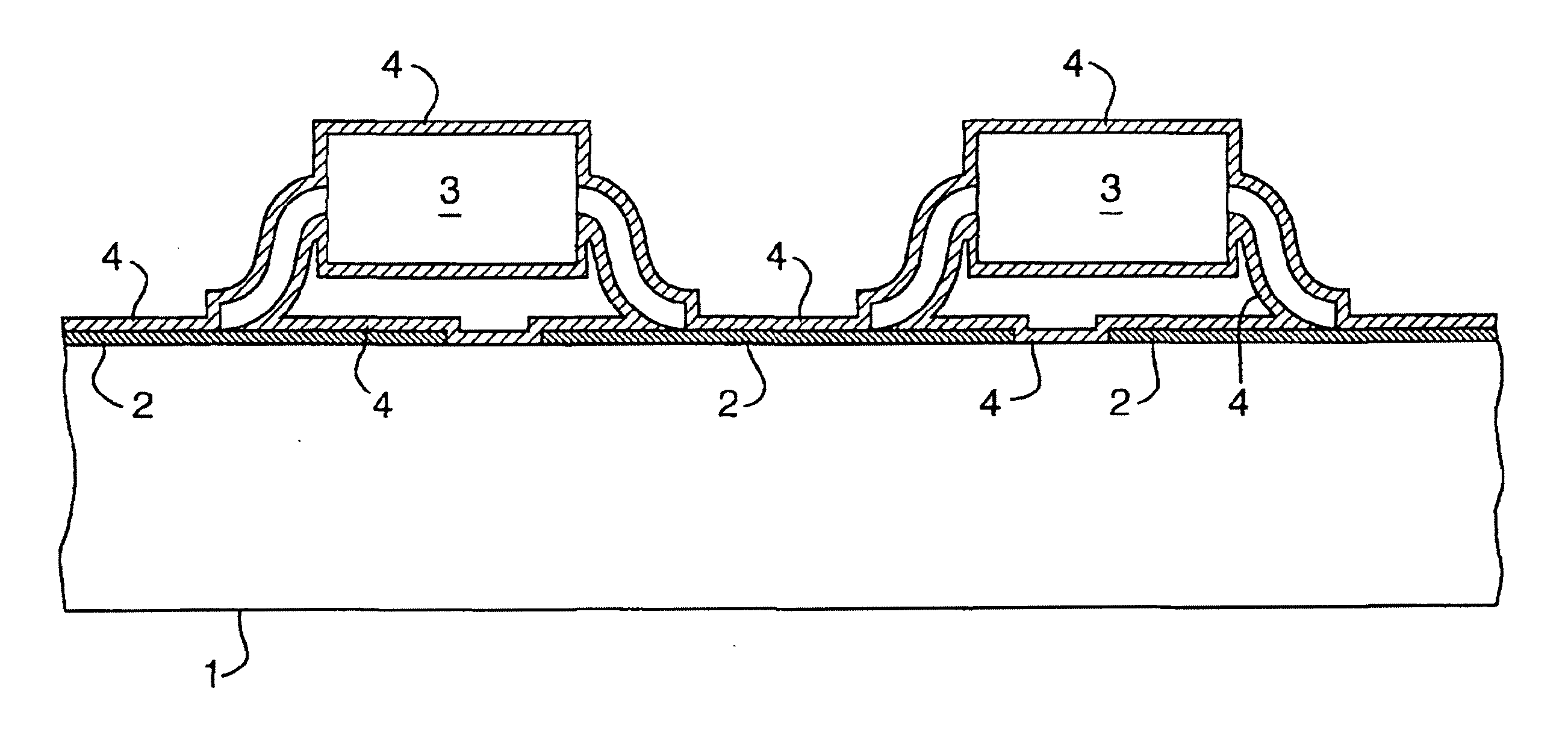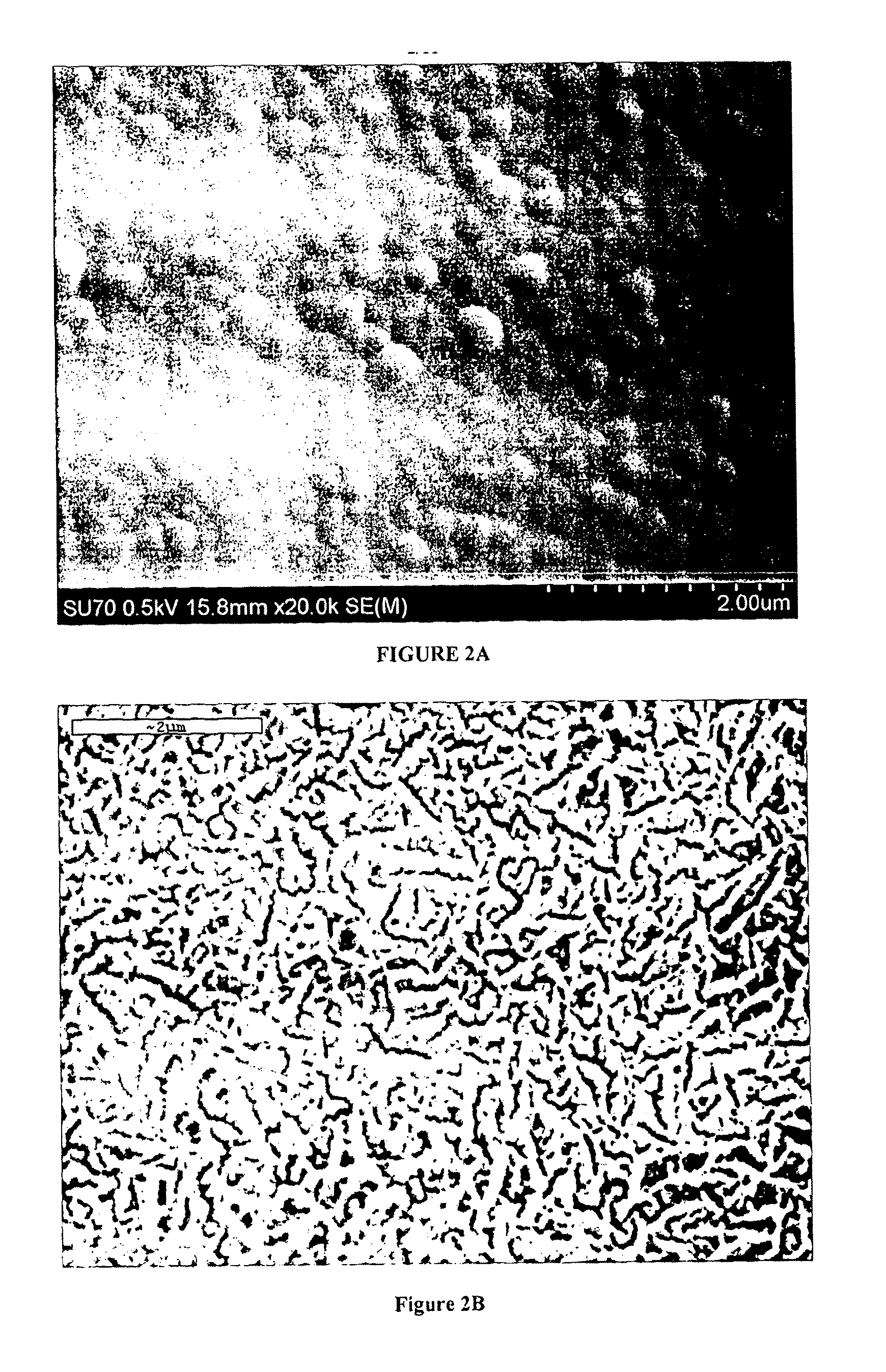Plasma-Polymerized Polymer Coating
a polymer coating and polymer technology, applied in the direction of plasma technique, electrical apparatus construction details, association of printed circuit non-printed electric components, etc., can solve the problems of unsatisfactory parylene deposition technique, time-consuming and expensive deposition process, and high cost of starting materials, so as to improve the performance of conformal coating and improve the protection of electrical assemblies during operation.
- Summary
- Abstract
- Description
- Claims
- Application Information
AI Technical Summary
Benefits of technology
Problems solved by technology
Method used
Image
Examples
example 1
XPS Analysis of a Plasma-Polymerized Fluorohydrocarbon
[0151]An epoxy laminate substrate was coated with a plasma-polymerized fluorohydrocarbon. This laminate was cut to yield a sample size of approximately 1 cm square and introduced to the sample chamber of a Thermo-Scientific ESCALAB 250 X-Ray Photoelectron Spectrometer.
[0152]The chamber was pumped down to an operating pressure of 10−10 Torr and then the sample was transferred to the analyzing chamber. A monochromatic X-ray beam was incident on the surface and the photoelectrons emitted by the sample were collected and analyzed.
[0153]A broad signal scan was conducted to capture all of the elements on the surface, and then a further high resolution scan of the C1s peak was conducted to determine the fine structure of the peak and the chemical structure of the sample.
[0154]The results are displayed in FIG. 1A.
example 2
Preparation of Coated Assemblies
[0155]Assemblies were coated in Runs 1 to 10 using the precursors and plasma-polymerization conditions displayed in Table 1 below.
TABLE 1FlowPowerBase PressureGrowth TimeRunPrecursor(sccm)(kW)(mTorr)(mins)1C3F61000.85072C3F61002.45073C3F61004.85074C3F64000.85075C3F64002.45076C3F64004.85077C4F81002.450108C4F81002.450109C2F3Cl1002.4501010C2F4Cl21002.45010
example 3
Preparation of Coated Assembly with 1,4-dimethylbenzene
[0156]An electrical assembly to be coated was placed into a plasma deposition chamber and the atmosphere was evacuated to 50 mTorr. 1,4-dimethylbenzene vapor was then introduced to the chamber at a flow rate of approximately 10 sccm using a mass flow controller. The RF generator was switched on at a power of 175 W and a plasma was formed. The 1,4-dimethylbenzene was ionized and then reacted with itself to form a continuous and conformal coating on the electrical assembly. Once the desired coating thickness had formed, the RF generator was switched off and the flow of 1,4-dimethylbenzene was stopped.
[0157]The chamber was brought to atmospheric pressure and opened and the electrical assembly with a conformal coating was removed.
PUM
| Property | Measurement | Unit |
|---|---|---|
| temperature | aaaaa | aaaaa |
| thicknesses | aaaaa | aaaaa |
| thicknesses | aaaaa | aaaaa |
Abstract
Description
Claims
Application Information
 Login to View More
Login to View More - R&D
- Intellectual Property
- Life Sciences
- Materials
- Tech Scout
- Unparalleled Data Quality
- Higher Quality Content
- 60% Fewer Hallucinations
Browse by: Latest US Patents, China's latest patents, Technical Efficacy Thesaurus, Application Domain, Technology Topic, Popular Technical Reports.
© 2025 PatSnap. All rights reserved.Legal|Privacy policy|Modern Slavery Act Transparency Statement|Sitemap|About US| Contact US: help@patsnap.com



